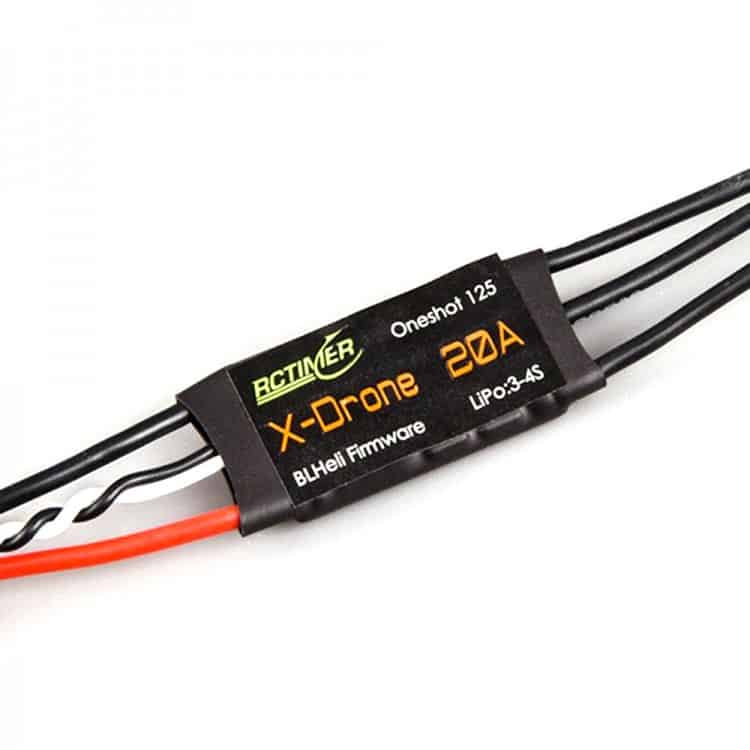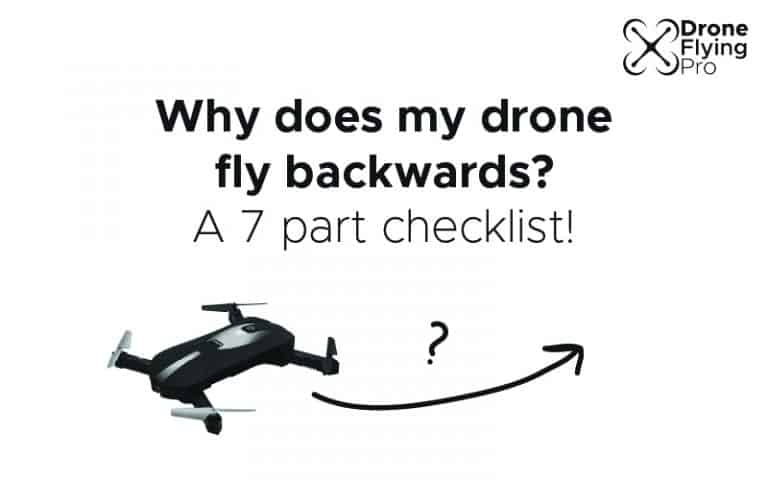Nothing beats the excitement of hearing your drone’s propellers and motors spool up. And nothing beats the disappointment of when your drone starts drifting as soon as it takes off. Here are seven reasons why your drone is not staying in one location and holding its position. You’ll get to know exactly what is important when asking the question “Why does my drone fly backwards?”
There are a few common culprits of drones flying backwards. Here are the seven that could be causeing this issue:
- Accelerometers need calibrating
- Transmitter settings
- Motor or ESC problems
- Propeller issues
- Not in GPS mode
- Backing up from obstructions
- Balance and placement
Drifting is a common part of drone flying and can be caused by a number of issues or factors of the drone and the flying conditions.
How to stop backwards drifting:
Here are all of the reasons that your drone may be flying backwards after take-off and the steps you can take to make sure that it doesn’t happen again!
1. Accelerometers need calibrating
Accelerometers are present in every drone and plat a very important part in determining the stability of the drone flight.
The accelerometers measure the rate of change of movement. So, if you hold the drone still (in any position) the sensor will not pick up any changes in movement.
The response to movement is shown really well in this short video:
Each drone is calibrated slightly differently due to software differences and hardware but all follow these simple principles while calibrating:
- Make sure the drone is held in the same orientation as indicated by the software that you are using to calibrate the accelerometer.
- Place the drone on a flat and stable surface and it is not moving
- Initiate the software calibration procedure for your drone
- Some require the drone to be powered off and on again. Follow all instructions on the software.
Here are some common drone models with a link to the best calibration methods that I have found.
| Drone Model | Link to the calibration method |
|---|---|
| DJI Mavic Mini | Youtube Link |
| DJI Mavic Air | Youtube Link |
| Parrot Anafi | Youtube Link Official Documentation |
| Syma X20 Mini Drone | Official YouTube |
| DJI Phantom 4 Pro+ | Official Youtube Youtube link |
2: Transmitter settings
If it is not something in the drone that is causing the backward drifting it would very well be that the transmitter is telling the drone to move. In that case the drone would move very slowly as the transmitter would be sending the signal.
All of the transmitter settings should be checked for your drone’s controller. If you are building your own drone you’ll need to be very particular with the settings for your transmitter.
If you have a DJI or other commercial drone you should check the trim and calibrate the remote using the Remote Controller Calibration section of your settings panel. Go to Settings > Remote Controller settings > Remote controller Calibration (in DJI GO 4 app)
Take the time to google the transmitter name and the serial number or find device-specific instructions for the drone and controller you are using.
Look for “how to trim” the drone that you are flying.
3: Motor or ESC problems
There is a very fine balancing act between the ESC (Electronic Speed Controller) the motors and the propellers. If any of these elements of the drone are not speaking properly to the other or are misbehaving in some way.

The ESC is a tiny electrical part that controls the speed of the motors. Although it is tiny it is doing hundreds, if not thousands, of calculations per second to keep the drone moving in a steady fashion.
Of course, the information that is sent by the ESC needs to be converted into movement by a motor. Drone motors have two major parts: A stator and a rotor. These interact with magnets and electricity to move the blades and cause the drone to take off.
Any small issue in either the signal or the movement of the four motors could cause drifting. Check for common issues online and
4: Propeller issues
Propellers for drones are like tires on a car. They are so important but also very easy to overlook.
Quite often we can forget the simple things on a drone – so take a look at that little bit of plastic that works it’s magic – the propellers.
4.1: Check for damage
It is important to check for tiny cracks or hairline fractures in your propeller blades. The easiest way to do this is with your fingers and fingernails.
Run your fingers over every part of each blades to feel for any damage or issues. You want to make sure that the surface of the blades are smooth and without any lumps or bumps. Then check the edges of the blades for chips or parts that have sustained damage from a collision with bugs or other obstacles.
Fingers are the best tool you have to check your propellers!
4.2: Check for correct propeller placement
Okay, we need to check propeller placement in two ways:
- Make sure the propellers are on the right motors
- Make sure that the propellers are on the motors securely.
In most models of drones there are markers that tell you what propeller should go where. For example the DJI drones have markings (white lines) that line up with the markings on the motors. Check to make sure that yours are on the right motors too.
Secondly, you should check to see if the propellers are connected to the motors securely. Hold the motor still and, very gently, wiggle the propellers. Do they move significantly? Oe are there blades that move more than the others. This could signify a crack in the connector.
If in doubt, try your drone with a fresh set of propellers. These can be found inexpensively at a range of drone and electronic retailers.
5: Not in GPS mode
A number of drones use GPS to hold their position.
95% of the time or better a drone can get 3-meter accuracy with GPS as stated by the US Government. That is the GPS accuracy in general (3 meters = 9.8452 feet). The GPS is also backed up with imagery and video processing to pinpoint exact locations.
For example, the DJI drones have a return to home function and a precision landing function which caused the drone to take pictures of it’s take off location. This allows it to land where it took off and it more accurate than if the drone used GPS only to land.
In general, your drone will need about 8 GPS satellites for it to accurately predict its location. You can however take off before that. The drones will use images and video to maintain a position but sometimes (particularly inside) the drone can have a hard time picking out stationary objects to compare it’s position to.
This can cause the drone to drift and move backwards.
One way to check this is to wait until the software in your drone has confirmed that it is using GPS positioning before taking off.
6: Backing up from obstructions
Many commercial and professional drones have sensors that stop it from smashing into people, buildings, and other objects. The DJI drones also have obstacle avoidance where they will try to maneuver around an object – that’s pretty cool right!
Drones can be fitted with a load of sensors such as Thermal, LiDAR, Time-of-Flight and multispectral sensors. They are bringing a load of new functions and operating advantages to a number of different fields. But with each new sensor that is on the drone – you have the potential for a new sensing issue.
Take a look at the forward facing sensors on your drone. Is there anything on the sensor that could be causing it to mis-calculate how close something is to the drone?
Here’s how you can clean your drone:
- Take a small microfiber cloth and wipe the cover of the sensor to remove any fingerprints
- Consider using compressed air or a blower to remove any particles stuck in the edges of the drone sensor.
7: Balance and placement
Small drones in particular are very sensitive to where things are placed in the body and on the arms of the drone. Any small change in weight distribution can cause the drone to drift ever so slightly.
Check out how this very small adjustment in cable placement can cause this small drone to drift backwards:
Take the time to check the body and arms of your drone or quad copter. Look for any extra tape that you may have used or anything else that may have caused the
For larger drones with stronger motors this is less of an issue but it is still good practice to check your drone and it’s body for any small imbalance in weight distribution.
Final word
There we have it! Check to see what could possibly be causing your drone to fly backward. Remember to check the obvious things first and you’ll be surprised how often the “silly” things can cause all sorts of issues.
Let me know if there was something else that you would add to the list!




